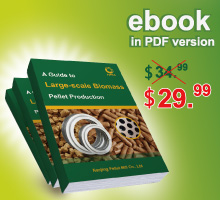As for wood pellets, the qualified pellets refer to those that produce little ashes in combustion, e.g. just taking about 0.3%. Generally the quality of the pellets has to be considered from the two aspects: mechanical durability and water content.
Mechanical durability refers to the density of the pellets and how it is produced. The higher densities of the pellets are, the solider the pellets will be, and the better they will counter the crashes produced during transportation, and the higher the pellet combustion efficiency will be. The surface of the qualified pellets is very smooth with little or no cracks. If the pellets get cracks or dilation, it means the water content of the pellets is too high or the pelletization is not successful. The length of the pellets is not as important as the above factors however if the pellets are too long (longer than one inch), they will damage the auger of the stove.
The less water the pellets have, the more energy they can emit in combustion. However certain water is needed in pelletization. Consequently, our goal will be to lower the water content as possible as we can on the condition that the pelletization is guaranteed, with the desired water content lower than 10% for the reason that once the water content gets higher than 10%, the combustion efficiency will be lowered.
The easiest way to test the quality of the pellets are to put the pellets in a cup of water. If it sinks down to the bottom, it means the pellet have high density, being compacted with adequate pressure. And if the pellet flows on the surface, it proves the pellet has low density and poor quality. In terms of the mechanical durability, it has low durability and can be broken easily or even become into powder.

